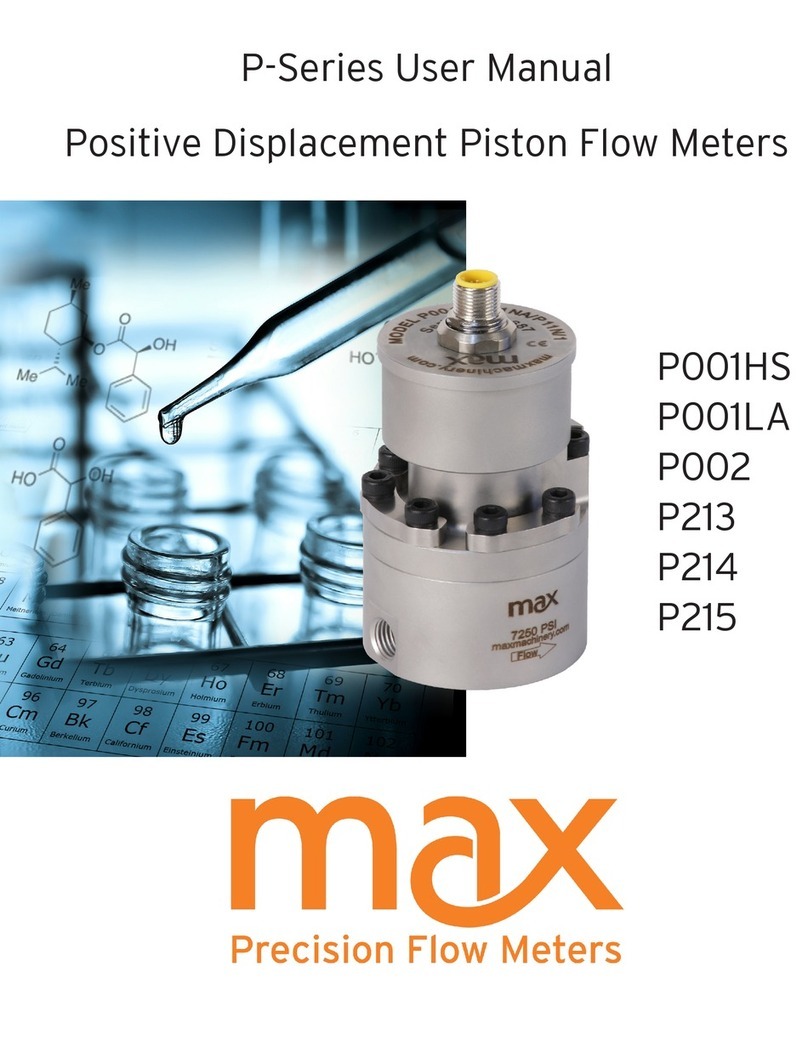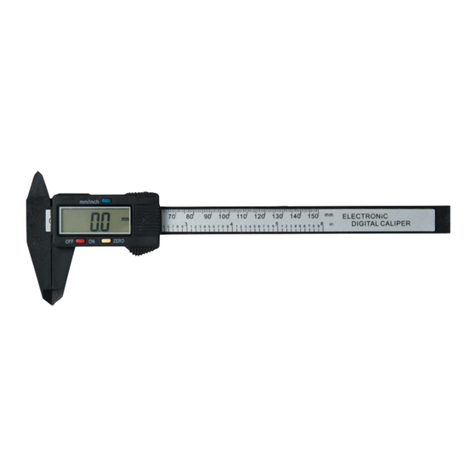
Max Machinery, Inc. G-Series User Manual © Copyright 2018 Rev2018A 4
Meter General Description
While gear meters are traditionally based on a design similar to a conventional hydraulic pump, the G Series of ow
meters has been engineered to increase signal resolution, prevent internal cavitation and greatly reduce the pressure
drop required to move uid through the gears.
Max ow meters and transmitters are calibrated at the factory as a matched set. This ensures the highest accuracy and
allows for quick setup in the eld. For eld installations where the transmitter has not been setup with a meter at the
factory, an optional serial interface kit is available to provide full access to all conguration options and parameters.
Solid state sensors are used to detect the position of a driven magnet inside the Max Flow Meter. Changes in position
are tracked by a microprocessor, which generates an output frequency proportional to the ow rate. Advanced signal
processing provides both ne angular resolution (0.36 degrees rotation per pulse) and rapid response (output updated
every 1 ms). The G-Series transmitter uses modern sensor technology coupled with advanced signal processing to deliver
new levels of performance and reliability.
Flow Meter Features
• Capable of operating at high pressures (425 bar/6000 psi).
• Compatible with a wide range of uid types and viscosities.
• Can operate at high temperatures with a suitable high
temperature transmitter.
• Available in 303 and 316 stainless steel.
Transmitter Features
• High resolution measurement –Analog Output: Congured output
ranges to any value within ±10 Vdc or ± 20 mA.
• Frequency Output: Congured output resolution of 1 to 1000
pulses per revolution.
• Linearization of up to 16 points to fully describe the ow meter’s
output curve and achieve the highest system linearity over the
meter’s entire operating range.
Max transmitters are designed to work with the entire family of Max Flow Meters to provide extremely precise ow
measurement in a cost effective package. Different options of industrial housings or IP66 rated explosion proof
enclosures, combined with a choice of one-part and two-part, high temperature designs with remote electronics cover a
wide range of application environments – from the laboratory to harsh industrial processes.
Compensation Algorithm – Compensates for variations in Hall sensor and ow meter characteristics to provide a stable,
undamped output that accurately represents the instantaneous ow rate. This feature is factory set when the meter
and transmitter are mated together. If the transmitter is changed, the compensation can be performed via a button on
the circuit board.
Anti-Dither Buffer - Masks the false output that may occur at very low ow rates in the presence of vibration or hydraulic
noise. If the meter reverses direction the output signal will be interrupted for a user selected portion of a meter rotation.
Reverse ow exceeding the buffer setting will result in an output proportional to reverse ow rate. The buffer quantity
can be set from 1% to 100% of a revolution.
Transmitter General Description
































